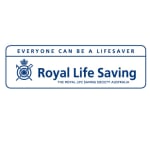

There is a quote by Elizabeth Stone that perfectly sums up how I feel about being a mother, “Making the decision to have a child – it is momentous. It is to decide forever to have your heart go walking around outside your body.”
And with that mindset, I read a devastating story not too long ago about a mother who fell asleep with her son next to her and woke up to find that he had drowned in her friend’s pool. It shook me to my core and into action.
As parents many of us hold onto the belief that “it won’t happen to me”. Yet in Australia drowning continues to be one of the most common causes of preventable death in children under five. This statistic shows that we aren’t doing enough to stop our kids drowning and we simply aren’t prepared if the unimaginable happens.
Here are five things we all need to do to prevent our precious kids from water-related death or injury.
1. Supervise, supervise, supervise.
Drowning happens quickly and silently, often within the time it takes to boil an egg. As parents we can easily get distracted by a million tasks on our to-do list but if our children are near water it is essential that we watch them ALL the time – an occasional glance while chatting or cleaning up the lunch mess isn’t enough.
The 2015 Royal Life Saving National Drowning Report found that 81% of drowning deaths in children aged 0 to 4 occurred due to falls into water when adult supervision lapsed or was totally absent. Supervised children don’t drown. Stay vigilant.

